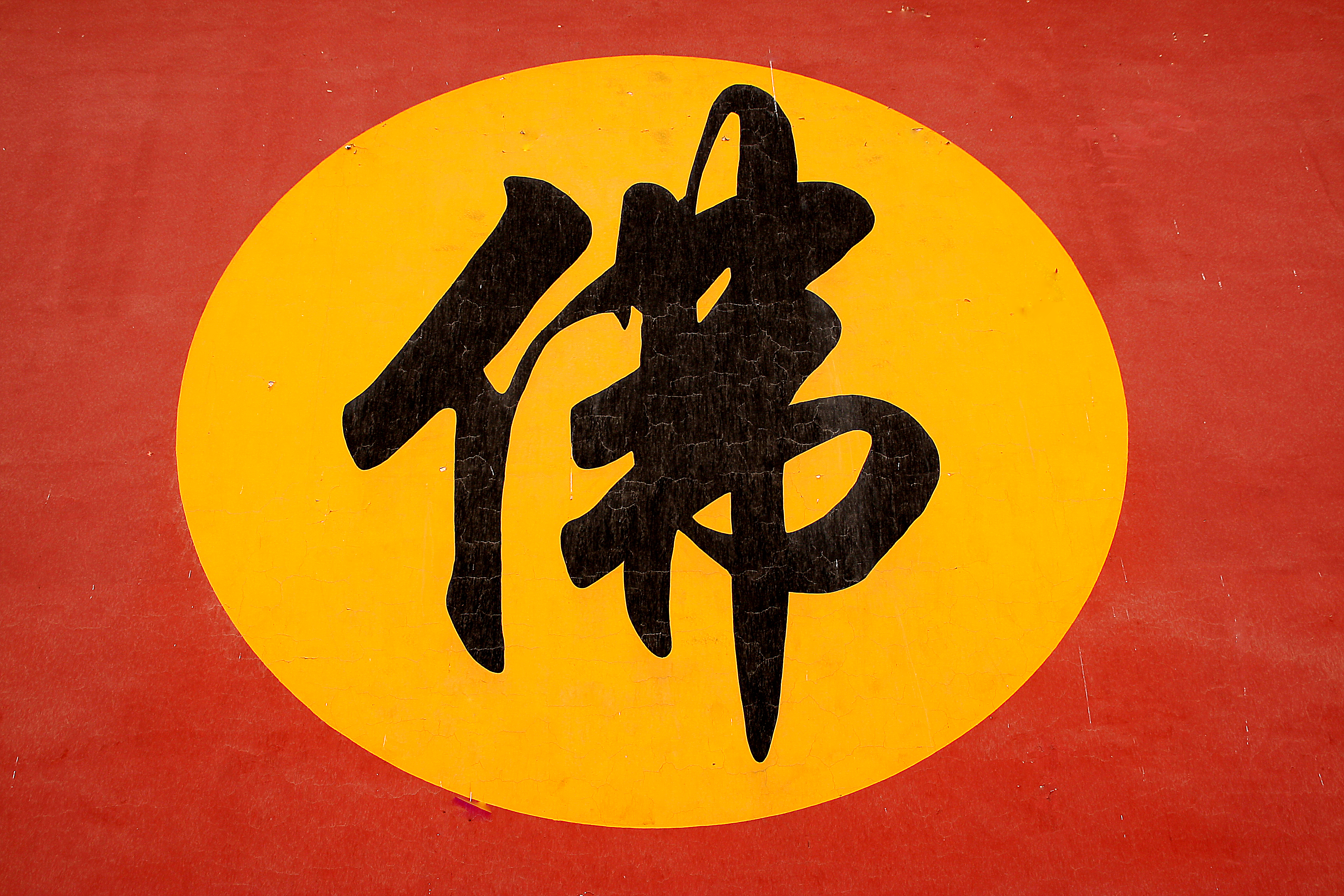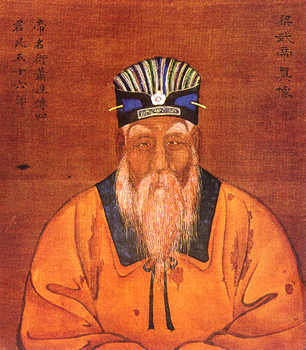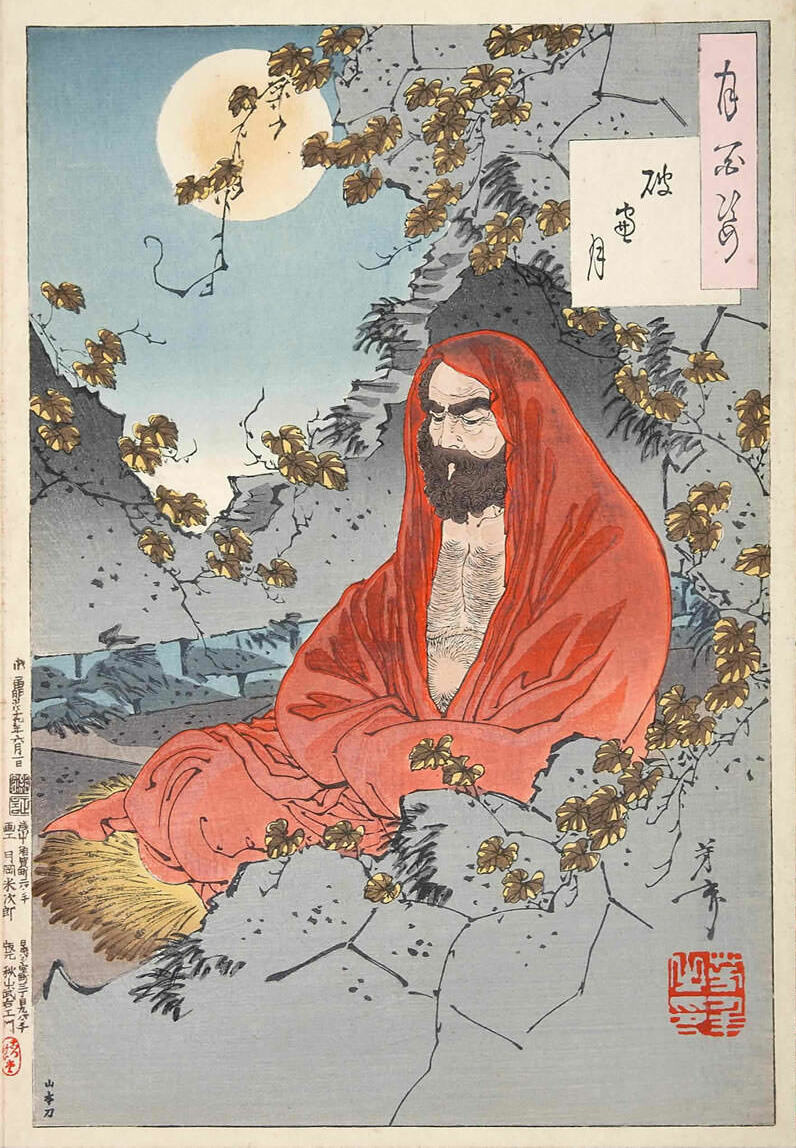|
Nembutsu Kōan
"Who is the master that sees and hears?" is a kōan-like form of self-inquiry practiced in the Zen tradition. It is best known from the 14th-century Japanese Zen Master Bassui Tokushō who pursued this question for many years. Overview Background Although Bassui is well-known for looking into the one who sees and hears, such a practice did not originate with him and has been variously pointed to in Buddhist sources. Bassui points out how many sutras stress the importance of seeing into one's own nature, and he reduces the six perfections of the Prajñāpāramitā Sūtra to this one truth as well. One can find many examples in Chan sources which point to the numinous nature of the sense-faculties. For instance, Mazu Daoyi says, "Now seeing, listening, sensing, and knowing are fundamentally your original nature 'běn xìng'', 本性 which is also called original mind 'běn xīn'', 本心" Similarly, the Hongzhou school master Fen-chou Wu-yeh says, "This very nature of yours ... [...More Info...] [...Related Items...] OR: [Wikipedia] [Google] [Baidu] |
Koan
A ( ; ; zh, c=公案, p=gōng'àn ; ; ) is a story, dialogue, question, or statement from Chinese Chan Buddhist lore, supplemented with commentaries, that is used in Zen Buddhist practice in different ways. The main goal of practice in Zen is to achieve (Chinese: jianxing 見性), to see or observe one's buddha-nature. Extended study of literature as well as meditation () on a is a major feature of modern Rinzai Zen. They are also studied in the Sōtō school of Zen to a lesser extent. In Chinese Chan and Korean Seon Buddhism, meditating on a , a key phrase of a , is also a major Zen meditation method. Etymology The Japanese term is the Sino-Japanese reading of the Chinese word ( zh, c= 公案, p=gōng'àn, w=kung-an, l=public case). The term is a compound word, consisting of the characters ('public; official; governmental; common; collective; fair; equitable') and ('table; desk, altar; (law) case; record; file; plan; mandate, proposal.') According to the Y ... [...More Info...] [...Related Items...] OR: [Wikipedia] [Google] [Baidu] |
Hanshan Deqing
Hanshan Deqing (, Wade Giles: Han-Shan Te-Ch’ing, "Crazy Mountain, Virtuous Clarity", c. 1546–1623), was a leading Buddhist monk and poet of the late Ming dynasty China.Buswell Jr.; Lopez Jr. (2013) ''The Princeton Dictionary of Buddhism'', p. 344. Princeton University Press.Hsu Sung-Peng (1979), p. 1. He was also posthumously named Hongjue Chanshi (弘覺禪師). Hanshan was known for studying and teaching Pure Land, Huayan and Chan Buddhism. He is known as one of the four great masters of the Wanli Era Ming Dynasty, along with Yunqi Zhuhong (1535–1613) and Zibo Zhenke (1543–1603) both of whom he knew personally. He also wrote their biographies after their deaths. Hanshan has remained an influential figure in Chinese Chan Buddhism down to the twentieth century. His works are widely printed and published in various editions. His teachings were most recently promoted by modern figures like Xuyun (1840?-1959) and his disciple Charles Luk (1898–1978). Life Ea ... [...More Info...] [...Related Items...] OR: [Wikipedia] [Google] [Baidu] |
Ōbaku
Ōbaku Zen or the Ōbaku school () is one of three main schools of Japanese Zen Buddhism, in addition to the Sōtō and Rinzai schools. The school was founded in Japan by the Chinese monk Ingen Ryūki, who immigrated to Japan during the Manchu conquest of China in the 17th century. It had a strong influence on Japanese Rinzai, which partly adopted Ōbaku practices, and partly renewed older practices in response to the Ōbaku school. History The development of the Ōbaku-shū in Japan began somewhere around 1620, a period when Chinese emigrants were coming to Nagasaki due to a decree by the shogunate allowing Chinese traders to conduct business there. The Chinese traders, in turn, began to request that monks from China come to Nagasaki "to serve the religious needs of their community and build monasteries in the late-Ming style with which they were familiar." The Chinese community was therefore thrilled when the founder of the Ōbaku, a master of the Linji school/sect named ... [...More Info...] [...Related Items...] OR: [Wikipedia] [Google] [Baidu] |
Hua Tou
''Hua Tou'' (simplified Chinese: 话头; traditional Chinese: 話頭, Korean: ''hwadu'', Japanese: ''watō'') is part of a form of Buddhist meditation known as ''Gongfu'' 工夫 (not to be confused with the Martial Arts 功夫) common in the teachings of Chan Buddhism, Korean Seon and Rinzai Zen. ''Hua Tou'' can be translated as 'word head', 'head of speech' or 'point beyond which speech exhausts itself'. A ''Hua Tou'' can be a short phrase that is used as a subject of meditation to focus the mind. Origins ''Hua Tou'' are based on the encounter-dialogues and ''koan'' of the interactions between past masters and students, but are shorter phrases than koans. The Hua Tou method was invented by the Chinese Zen master Dahui Zonggao (1089–1163) who was a member of the Linji school. Dahui was interested in teaching the lay community, particularly the educated Chinese scholar-officials. Support of those "literati" was essential for the survival of the individual lineages, since ap ... [...More Info...] [...Related Items...] OR: [Wikipedia] [Google] [Baidu] |
Korean Seon
Seon or Sŏn Buddhism (; ) is the Korean name for Chan Buddhism, a branch of Mahāyāna Buddhism commonly known in English as Zen Buddhism. Seon is the Sino-Korean pronunciation of Chan, () an abbreviation of 禪那 (''chánnà''), which is a Chinese transliteration of the Sanskrit word of ''dhyāna'' ("meditation"). Seon Buddhism, represented chiefly by the Jogye and Taego orders, is the most common type of Buddhism found in Korea. A main characteristic of Seon Buddhism is the use of the method of meditation, Ganhwa Seon. A Korean monk, Jinul accepted partially a meditative method of Chan Buddhism in 1205. In Chan Buddhism, ''hwadu'' () is a delivery of realising a natural state of the Awakening. Jinul addressed a doctrine of Sagyo Yiepseon () that monks should live an inborn life after learning and forgetting all creeds and theories. Within the doctrine of Jinul, ''hwadu'' is the witnessing of truthful meaning in everyday life. History During the Goryeo dynasty Jinu ... [...More Info...] [...Related Items...] OR: [Wikipedia] [Google] [Baidu] |
Chan Buddhism
Chan (; of ), from Sanskrit '' dhyāna'' (meaning " meditation" or "meditative state"), is a Chinese school of Mahāyāna Buddhism. It developed in China from the 6th century CE onwards, becoming especially popular during the Tang and Song dynasties. Chan is the originating tradition of Zen Buddhism (the Japanese pronunciation of the same character, which is the most commonly used English name for the school). Chan Buddhism spread from China south to Vietnam as Thiền and north to Korea as Seon, and, in the 13th century, east to Japan as Japanese Zen. History The historical records required for a complete, accurate account of early Chan history no longer exist. Periodisation The history of Chan in China can be divided into several periods. Zen, as we know it today, is the result of a long history, with many changes and contingent factors. Each period had different types of Zen, some of which remained influential, while others vanished. Andy Ferguson distinguishes thr ... [...More Info...] [...Related Items...] OR: [Wikipedia] [Google] [Baidu] |
Emperor Wu Of Liang
Emperor Wu of Liang () (464 – 12 June 549), personal name Xiao Yan (蕭衍), courtesy name Shuda (叔達), childhood name Lian'er (練兒), was the founding Emperor of China, emperor of the Chinese Liang dynasty, during the Northern and Southern dynasties period. His reign, until its end, was one of the most stable and prosperous among the Southern dynasties. He came from the same Xiao clan of Lanling (蘭陵蕭氏) that ruled the preceding Southern Qi, Southern Qi dynasty, but from a different branch. Emperor Wu established universities and extended the Confucian civil service exams, demanding that sons of nobles (士族) study. He was well read himself and wrote poetry and patronized the arts. Although for governmental affairs he was Confucian in values, he embraced Buddhism as well. He himself was attracted to many Indian traditions. He banned the sacrifice of animals and was against execution (legal), execution. It was said that he received the Buddhist precepts during his r ... [...More Info...] [...Related Items...] OR: [Wikipedia] [Google] [Baidu] |
Bodhidharma
Bodhidharma was a semi-legendary Bhikkhu, Buddhist monk who lived during the 5th or 6th century CE. He is traditionally credited as the transmitter of Chan Buddhism to China, and is regarded as its first Chinese Lineage (Buddhism), patriarch. He is also popularly regarded as the founder of Shaolin kung fu, an idea popularized in the 20th century, but based on the 17th century Yijin Jing and the Daoist association of ''daoyin'' gymnastics with Bodhidharma. Little contemporary biographical information on Bodhidharma is extant, and subsequent accounts became layered with legend and unreliable details. According to the principal Chinese sources, Bodhidharma came from the Western Regions, which typically refers to Central Asia but can also include the Indian subcontinent, and is described as either a "Persians, Persian Central Asian" or a "South Indian [...] the third son of a great Indian king." Aside from the Chinese accounts, several popular traditions also exist regarding Bodhi ... [...More Info...] [...Related Items...] OR: [Wikipedia] [Google] [Baidu] |
Book Of Serenity
''Book of Equanimity'' or ''Book of Serenity'' or ''Book of Composure'' (Chinese: 從容錄, Cóngróng lù; Japanese: 従容錄, ''Shōyōroku'') is a book compiled by Wansong Xingxiu (1166–1246), and first published in 1224. The book comprises a collection of 100 koans written by the Chan Buddhist master Hongzhi Zhengjue (1091–1157), together with commentaries by Wansong. Wansong's compilation is the only surviving source for Hongzhi's koans. The full title is ''The Record of the Temple of Equanimity With the Classic Odes of Venerable Tiantong Jue and the Responsive Commentary of Old Man Wansong'' (, ''Wansong Laoren Pingchang Tiantong Jue Heshang Songgu Congrong An Lu'', Taisho Tripitaka Vol. 48, No. 2004). Along with '' The Gateless Barrier'', the ''Book of Equanimity'' is considered one of the two primary compilations of Zen dialogue. Shohaku Okumura has called the collection "a classic text that is still studied by Zen students today." Reb Anderson has called it "a ... [...More Info...] [...Related Items...] OR: [Wikipedia] [Google] [Baidu] |
Blue Cliff Record
The ''Blue Cliff Record'' () is a collection of Chan Buddhist kōans originally compiled in Song China in 1125, during the reign of Emperor Huizong, and then expanded into its present form by Chan master Yuanwu Keqin (1063–1135; ).K. Sekida, ''Two Zen Classics'' (1977) p. 18-20 The book includes Yuanwu's annotations and commentary on ''100 Verses on Old Cases'' (), a compilation of 100 kōans collected by Xuedou Chongxian (980–1052; , '). Xuedou selected 82 of these from the Song period work '' The Jingde Record of the Transmission of the Lamp'', with the remainder selected from the ''Yunmen Guanglu'' (, ''Extensive Record of Yunmen Wenyan'', 864–949). History Name and origin The ''Blue Cliff Record'' derives its name from the temple where Yuanwu Keqin wrote most of his commentaries, the Blue Cliff Cloister (碧巖院, ''Bìyán Yuàn'') in Hunan. The work was originally called Xuedou's ''Juko'' (''ju'', verse; ''ko'', old koans) before its ''Blue Cliff Record'' tit ... [...More Info...] [...Related Items...] OR: [Wikipedia] [Google] [Baidu] |
Hakuun Yasutani
was a Sōtō Zen priest and the founder of the Sanbo Kyodan, a lay Japanese Zen group. Through his students Philip Kapleau and Taizan Maezumi, Yasutani has been one of the principal forces in founding western (lay) Zen-practice. Biography Ryōkō Yasutani (安谷 量衡) was born in Japan in Shizuoka Prefecture. His family was very poor, and therefore he was adopted by another family. When he was five he was sent to Fukuji-in, a small Rinzai-temple under the guidance of Tsuyama Genpo. Yasutani saw himself becoming a Zen-priest as destined: Yet his chances to become a Zen-priest were small, since he was not born into a temple-family. When he was eleven he moved to Daichuji, also a Rinzai-temple. After a fight with another student he had to leave, and at the age of thirteen he was ordained at Teishinji, a Sōtō temple and given the name Hakuun meaning "white cloud". When he was sixteen he moved again, to Denshinji, under the guidance of Bokusan Nishiari, a former lead ... [...More Info...] [...Related Items...] OR: [Wikipedia] [Google] [Baidu] |
Yamada Koun
, or Koun Yamada, was a Japanese Buddhist who was the leader of the Sanbo Kyodan lineage of Zen Buddhism, the Dharma heir of his teacher Yasutani Haku'un Ryoko. Yamada was appointed the leader of the Sanbo Kyodan in 1967, 1970 or 1973 and continued to differentiate the lineage from other Japanese Zen traditions by deemphasizing the separation between laypeople and the ordained—just as his teacher Yasutani had done. Yamada was also instrumental in bringing Christians to the practice of Zen that “by the end of Yamada’s teaching career approximately one quarter of the participants at his sesshins were Christians”.Spuler, 9-10Habito (1990), pp. 235-236 Biography Early career Yamada Koun was born Yamada Kiozo in Nihonmatsu in Fukushima prefecture of Japan in 1907.Aitken 1990, p. 152 He attended school with Soen Nakagawa at Dai-Ichi High School located in Tokyo, Japan, and also went to university with him.Koun, 296 In 1941 Yamada began working as a labor supervisor ... [...More Info...] [...Related Items...] OR: [Wikipedia] [Google] [Baidu] |




